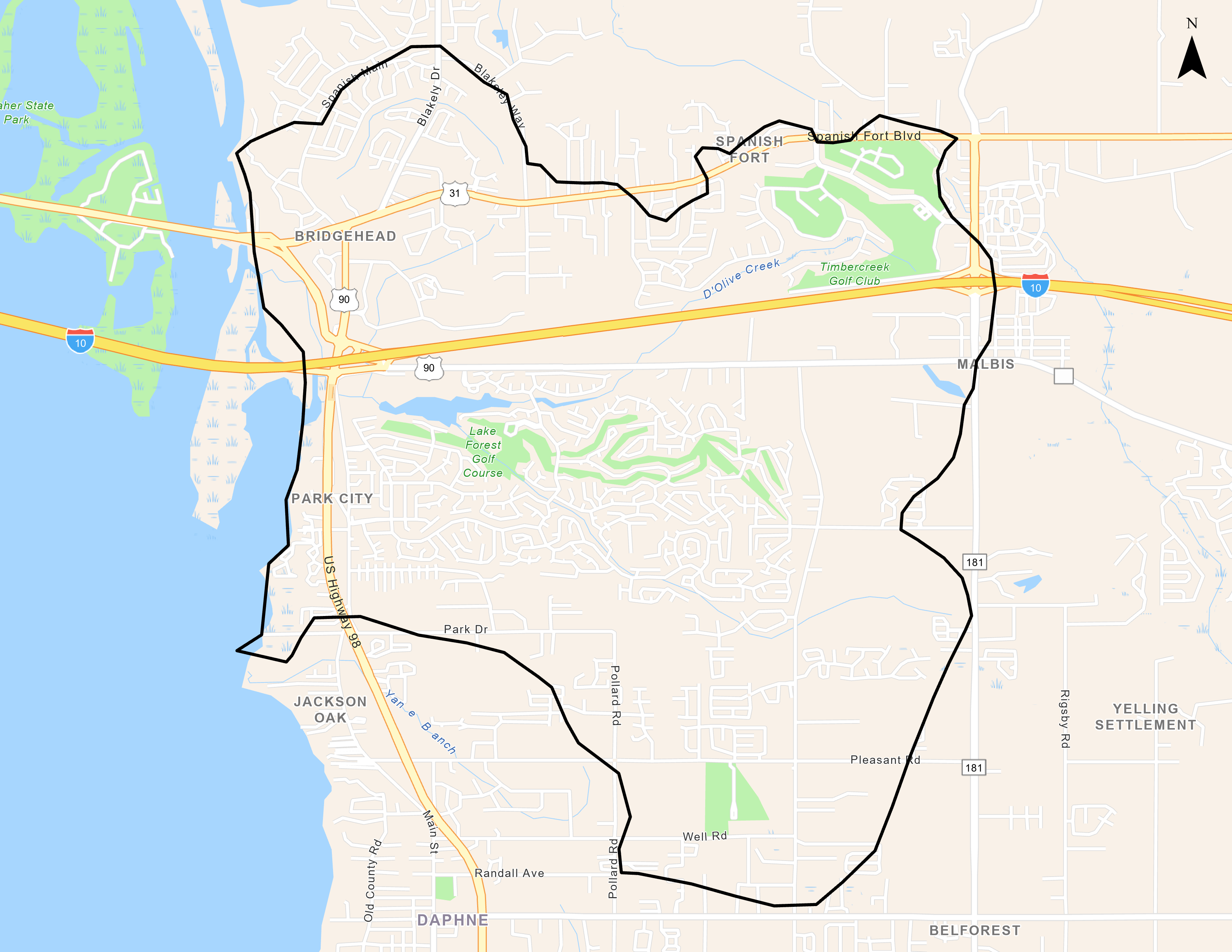The Landscape

Watershed Size and Location
The D'Olive Creek Subwatershed covers approximately 7,700 acres along the eastern shore of Baldwin County within the cities of Daphne, Spanish Fort, and unincorporated areas of Baldwin County. Landuse breakdown within the watershed is Urban 47%, Upland Forest 36%, Agriculture 9%, Upland non-forest 1%, and wetlands and open water 7%.
Main Tributaries and Tidal Influence
The D'Olive Creek Watershed is a subwatershed to the larger Tensaw-Apalachee HUC 12 watershed. The primary named tributaries within the watershed are D'Olive Creek, Joe's Branch, Tiawasse Creek. D'Olive Bay and the lower portions of D'Olive Creek, below the impoundment in the Lake Forest subdivision, are tidally influenced.
Water Use Classification and Impairments
D'Olive Creek, Tiawasse Creek, and Joe's Branch are classified for Fish and Wildlife usage by ADEM. Currently, D'Olive Creek, Tiawasse Creek, and Joe's Branch are all listed on the state of Alabama's 303(d) list of impaired waters for siltation (habitat alteration) due to land development. Increased volume and velocity of stormwater runoff, as well as changes to local drainage patterns, have exacerbated concerns over erosion and sedimentation within the watershed’s stream network, Lake Forest Lake, D’Olive Bay, and Mobile Bay.
Human Uses
Access to the waterways along D'Olive Creek is limited primarily to the pathways and boardwalks at "Alligator Alley" and Bayfront Park, two parks in the City of Daphne. A kayak launch is available at Bayfront Park, and both locations provide good vantage points for viewing birds and other wildlife.
Ecological Importance
Data on sediment chemistry, bed loads, and water quality show that D'Olive Creek, Tiawasse Creek, and Joe's Branch have been severely affected by land use change and anthropogenic activities. The lower portions of D'Olive Creek provide suitable habitat to support a population of North America's largest reptile, the American alligator. USFWS documented T&E Species: Florida manatee (Trichechus manatus latirostris), Alabama red-bellied turtle (Pseudemys alabamensis) and Gulf sturgeon (Acipenser oxyrinchus desotoi).




